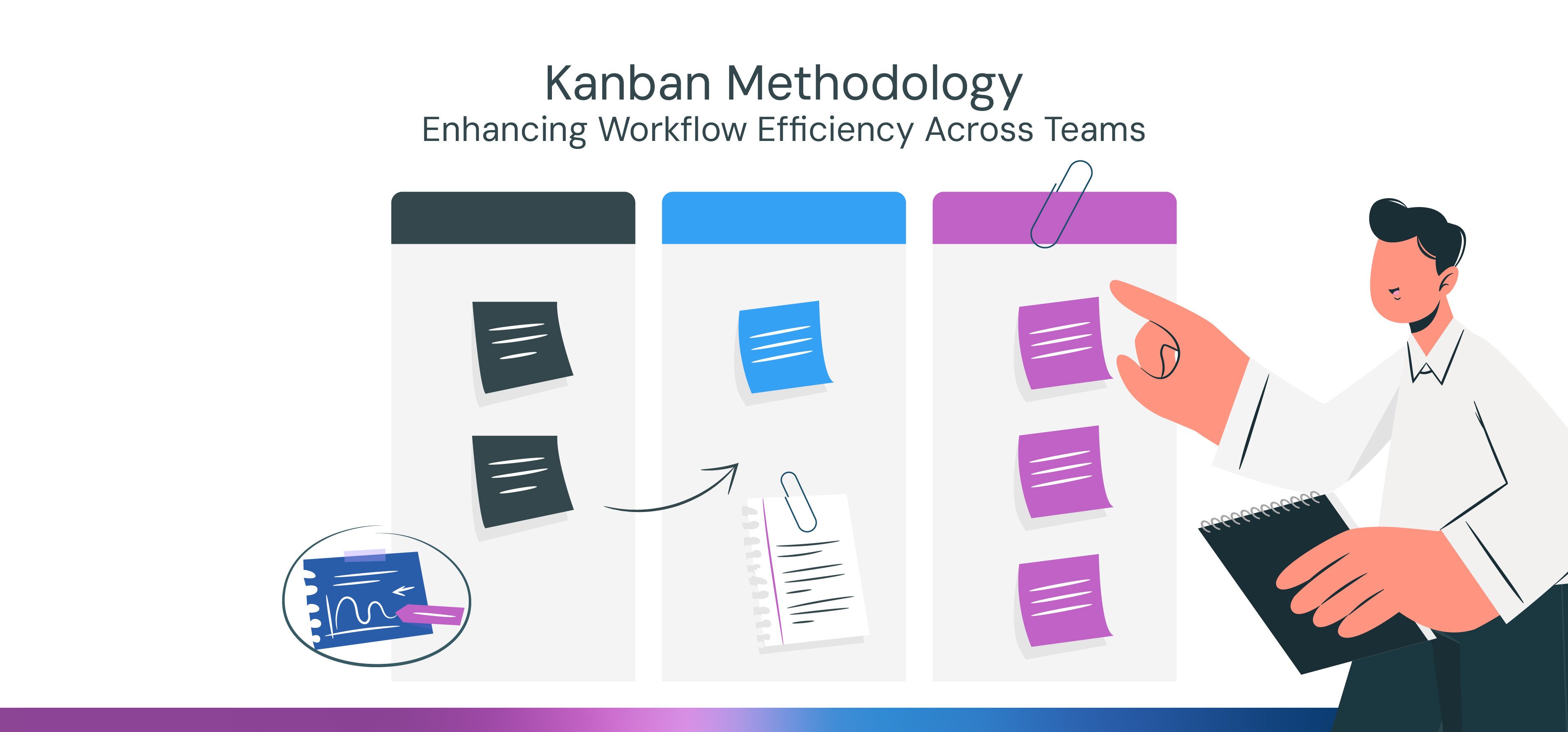Kanban Methodology: Enhancing Workflow Efficiency Across Teams
Imagine a world of work where tasks flow smoothly, bottlenecks are identified in a flash, and everyone's on the same page. That's the magic of the Kanban methodology, a visual project management system designed for continuous improvement.
At its core, Kanban is all about visualization. Just like a busy intersection has traffic lights to keep things moving, a Kanban board uses columns to represent different stages of work (e.g., To Do, In Progress, Done). Tasks, depicted as cards, travel across these columns, providing a clear picture of progress at a glance.
Here's what makes Kanban shine:
𝗙𝗼𝗰𝘂𝘀 𝗼𝗻 𝗙𝗹𝗼𝘄: Kanban prioritizes a steady workflow, limiting the number of tasks in progress (WIP) to avoid overwhelm. This ensures teams deliver high-quality work without getting bogged down.
𝗘𝗻𝗵𝗮𝗻𝗰𝗲𝗱 𝗖𝗼𝗹𝗹𝗮𝗯𝗼𝗿𝗮𝘁𝗶𝗼𝗻: The visual nature of Kanban boards fosters transparency and communication. Team members can easily see what everyone's working on, identify dependencies, and collaborate effectively.
𝗙𝗹𝗲𝘅𝗶𝗯𝗶𝗹𝗶𝘁𝘆 𝗶𝘀 𝗞𝗲𝘆: Unlike some rigid project management methods, Kanban embraces change. New tasks can be easily added, and priorities can be adjusted as needed, making it perfect for dynamic environments.
𝗖𝗼𝗻𝘁𝗶𝗻𝘂𝗼𝘂𝘀 𝗜𝗺𝗽𝗿𝗼𝘃𝗲𝗺𝗲𝗻𝘁: Kanban is built on the idea of constantly refining your process. By regularly analyzing workflow and identifying bottlenecks, teams can continuously optimize their way of working.
Kanban in Action:
Take a software development team for example. They might have a Kanban board with columns like "Backlog" (ideas for new features), "To Do" (assigned tasks), "In Progress" (developers working on code), "In Review" (testing phase), and "Done" (completed features). As tasks move across the board, the team can see exactly where things stand and make adjustments to keep development flowing smoothly.
Kanban is a powerful tool for anyone who wants to improve their project management. Its simplicity, flexibility, and focus on continuous improvement make it a favorite among Agile teams and beyond.
Now it's your turn! How do you think Kanban could benefit your projects? Share your thoughts in the comments below!

